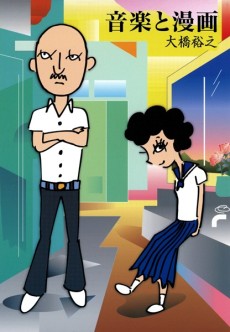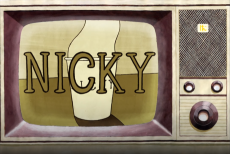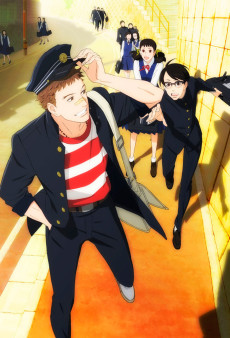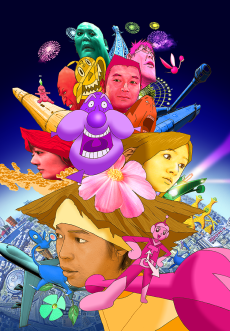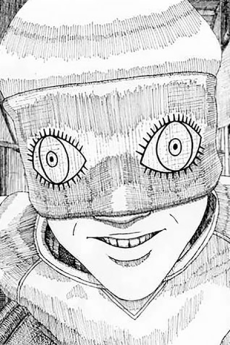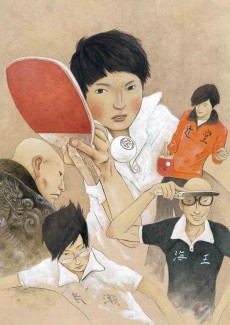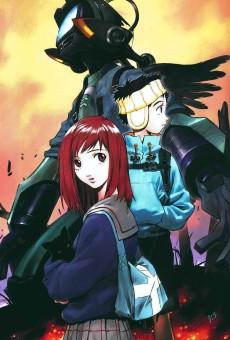ONGAKU
MOVIE
Dubbed
SOURCE
MANGA
RELEASE
January 11, 2020
LENGTH
70 min
DESCRIPTION
When you’re a bored teenager looking for thrills, sometimes the only thing you can turn to is rock ‘n roll. Having no skill, money, or even a full set of drums, a feared trio of high school delinquents nevertheless decide they are destined for musical glory in a quest to impress their only friend Aya, avoid a rival gang, and – most importantly – jam out. Animated almost entirely by director Kenji Iwaisawa, and featuring a lead performance by Japanese alt-rock legend Shintaro Sakamoto, ON-GAKU: OUR SOUND brings its own sound and vision to the Hiroyuki Oohashi manga from which it was adapted. With pitch-perfect deadpan humor, the film presents a highly original take on the beloved slacker comedy: a lo-fi buddy film with a blaring musical finale that will leave you wanting an immediate encore.
(Source: GKIDS)
CAST
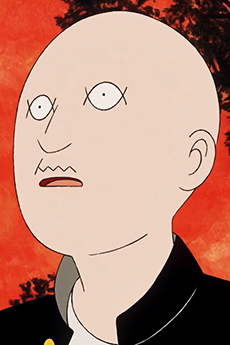
Kenji
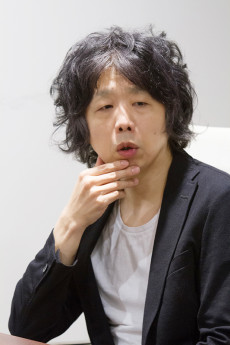
Shintarou Sakamoto
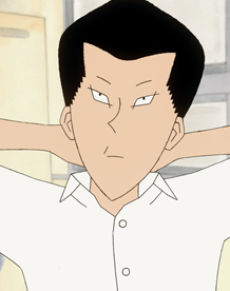
Ota
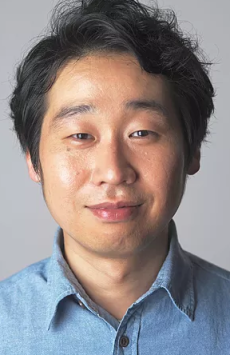
Tomoya Maeno

Asakura
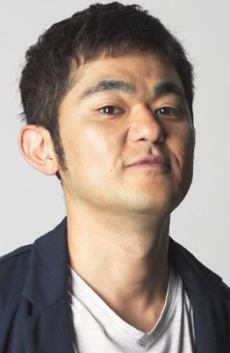
Tateto Serizawa
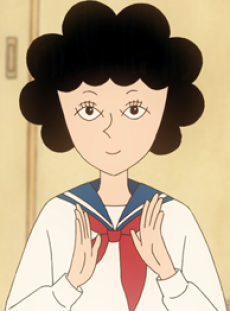
Aya
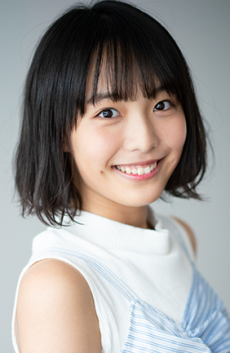
Ren Komai

Morita

Kami Hiraiwa

Oba
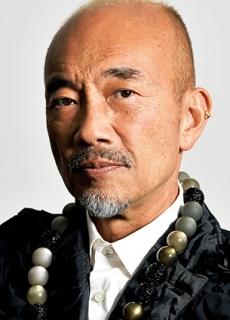
Naoto Takenaka

Ooba Gundan Hige

Shouichirou Suzuki

Ooba Gundan Matsui

Ryou Mochimatsu

Ooba Gundan Yamada

Ryou Hayashi

Ooba Gundan Tanaka

Keita Hayakawa

Shouchiku Senpai
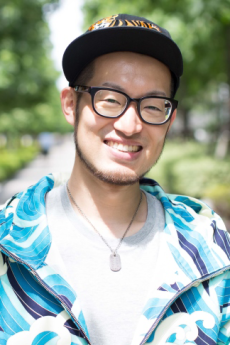
Yuutarou Sawada

Ooba Gundan Yamamoto

Keita Hayakawa

Ooba Gundan Suzuki

Shigeki Yanagisawa

Kobijutsu Kamihane

Keisuke Yamamoto

Kobijutsu Mushroom

Noriaki Ooyama

Ooba Gundan Nakayama

Kosuke Asai

Baito Shunin

Noriaki Ooyama

Bandman

Kosuke Asai

Joshi Seito B

Mio Matsutake

Jump Shounen Hitoshi

Reppizu

Dorobou

Ryou Mochimatsu

Appa-kun

Tama Himeno

MC

Yuki Matsuo

Appa-kun ni Karamareru Otoko

Yuutarou Sawada

Kakariin

Masakazu Amahisa
RELATED TO ONGAKU
REVIEWS

saulgoodman
80/100The halcyon days are sometimes the bestContinue on AniList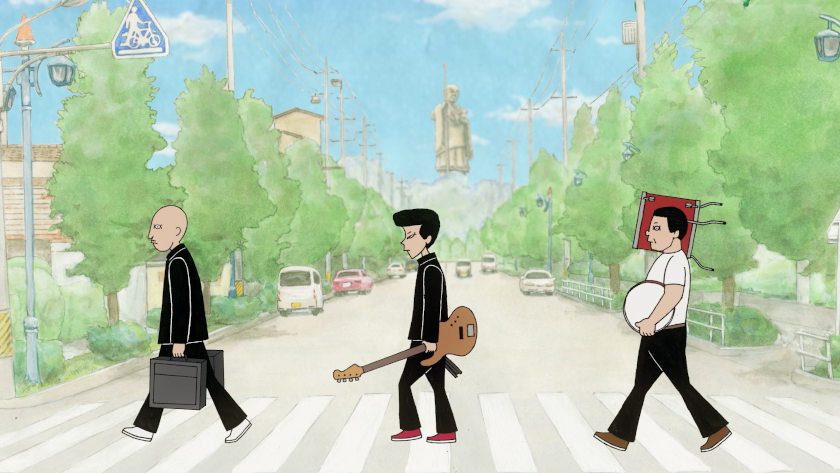
The Simpler Things in Life "Ongaku" (音楽) is Japanese for "music". So, essentially, the title of this film is literally "Music". Which entirely encapsulates the film's vision. How? Ongaku is amazingly frank with, well, everything.
The mention of high-school music bands often and immediately strays one's mind to fiercely burning tales of youth, newfound passion and blossoming friendships. Add in Ongaku, and shows like K-On and Beck: Mongolian Chopsquad seem amusingly exaggerated in a Rose of Versailles-esque fashion. That is, Ongaku depicts the offscreen moments of busybody life. The listlessness and lethargy that embodies much of our life is examined through a misfit trio of delinquents; Kenji, Asakura and Ota.
The trio, infamous for their fighting prowess, pass their days playing video games and throwing darts in an empty classroom afterschool, occasionally satiating their boredom with fights and chatting with female classmate, Aya. Kenji is unapologetic in his enigmatic stride. Everything he does seems to be on whim. Picking fights, stealing a stranger's guitar and starting and quitting a band; Kenji's mind follows no concrete protocol. His screen time cherishes several seconds of still frames of his silent, staring expression before uttering a few words. Perhaps he best embodies the mishmash of simplicity and eccentricity in this film, with his bareboned character and inexplicable courses of action. I believe director Iwaisawa himself best explains the nature of Ongaku, during an interview:
"When you think about a story about high school students starting a band, you tend to think about a youthful tale involving friendship, love, or struggles. But On-Gaku didn’t have any of those obvious elements, which is why I especially enjoyed the story."
Ongaku takes wide and relaxed strides in its pacing. Though gentle in its refreshing depiction of a monotone high-school life, Ongaku suffers from tunnel vision and blazes ahead with a strong sense of vision and direction.
Like a child proudly sticking their nose in the air while showing off their crayon doodles, Ongaku confidently strides by with its bareboned art-style. I mean, Kenji is essentially a mustached Saitama and I'd be less than doubtful if ONE is revealed to have worked on the character designs. In a coalescence with the absolutely nutty animation, however, the visuals in this film are a cut above many. To put it into perspective, Ongaku is an independent film worked on for 7 years and contains 40,000 hand-drawn frames. Perhaps Ongaku's minimalist art-style prevents it from being chimed in during sakuga discussions, but the clear-as-day effort put into the omnipresent fluidity makes Ongaku one of the best animated works I've seen.
Ongaku cherishes and achieves subtlety through its visuals. The characters are rigid with blank expressions and unblinking eyes, and their constant miniscule vibrations lovingly point to the hand-drawn nature. The hefty rotoscoping plasters a smile on your face. It isn't exclusively used in grand climaxes, but generously allocated to mundane scenes, like Kenji and Co. walking down the hallway. However, it does accentuate and elevate the musical portions of the film, such as Morita wildly ripping on his guitar in a public performance and the ending festival scenes. With their balls-to-the-wall eccentric energy and atmospheric ecstasy, they're such a jarringly amazing deter from the usual listlessness of the film.

Conclusion Thematic isn't sought after in this film. It instead relishes in illustrating a breath-of-fresh-air in the school and music genre. Because of Kenji's humorously arbitrary nature, music is no more than a brief, amateurish stint. In a hybrid genre that often deters lethargy and passivity in favor of trials and tribulations shared together with friends, woes of failure and triumphs of success, Ongaku picks up and embraces them. The passing moments are never the most fulfilling or memorable, but Ongaku damn well made the passing days of a delinquent trio mesmerizing.
The touch of eccentricity gives the film its entertaining flavor. The deadpan character expressions, frequent stretches of silence and the trio's offbeat band sessions stifle a chuckle in your stomach, but leaves you with a grin. The rotoscoping and general organic sense of animation and art breathes unsuspecting eccentricity into the film, offering both the most mundane and most bizarre scenes. Ongaku carries a reminiscent scent of Ping Pong: The Animation and Yuasa's other works.
Despite revolving around a rock-n-roll band with some references to the music genre, Ongaku shies away from the microphone and instead provides ambience of buzzing passerby and muffled background conversations. Though, when it does decide to distance itself from reposeful atmosphere, it goes off unhinged in the downright inanely bizarre and wild musical performance scenes without a hint of buildup. Overall, however, Ongaku is clearly unbothered with music. Just like Kenji, music is simply a device to give abstraction to itself. Music doesn't exactly empower, uplift, colorize or bless meaning upon anything in this film. And that unfulfilling meaninglessness is adolescence at its core.
Ongaku is a surprisingly overlooked gem from the recent times. Perhaps the minimal art-style and fluid animation coalesce into an uncanny sight to some, but rest assured, this short 1 hour, 11 minute film will fly by with a refreshingly mint aftertaste.


GeneralMills
90/100when 'our sound' of listless youth finds purpose, it becomes music.Continue on AniList__“What just happened felt so good” —Kenji__
This review contains mild spoilers for the film
I have always been drawn to the infectious capability of raw amateur passion. The clarity and fulfillment that come with the small victories of self-driven creative endeavors are irreplaceable, but capturing that indescribable feeling on screen is an elusive task. ON-GAKU: OUR SOUND is an intrepid venture into the act of creation, and an honest portrayal of the gratification that comes with turning sound into music.
The project itself is a heartfelt illustration of those very ideals and is essentially a one-man show from director, designer, writer, and animator Kenji Iwaisawa. It took a sprawling seven and a half years (obligatory REDLINE meme) through the painstaking process of rotoscoping for this adaptation to come to fruition, with Iwaisawa drawing over 40,000 frames on his own. There’s something inherently courageous about a creator diving into a project without a clear end goal or the established structures to achieve it. By putting the process first, you give up control in exchange for agency. You can feel that sense of going off the cuff and rolling with the process that embodies the spirit of the original work so well. Iwaisawa almost puts himself in the work through the adaptation process, and presents something truly genuine in its wake.
The result is a deadpan buddy comedy with a matter-of-fact delivery, capturing the blithe capriciousness of youth with an effortless swagger. Its particular focus is on the meandering curiosity of a trio of ambitionless delinquents, and their discovery of the limitless possibilities that the power of music offers. De facto leader Kenji, voiced by musician Shintaro Sakamoto, unceremoniously acquires a bass on the street in front of the local dive bar and decides to start up a rock band with his clumsy compatriots on a sudden and formless whim. What follows is not a story of their path to stardom, but rather a proud declaration of DIY sensibilities that is unapologetically frank about its message.
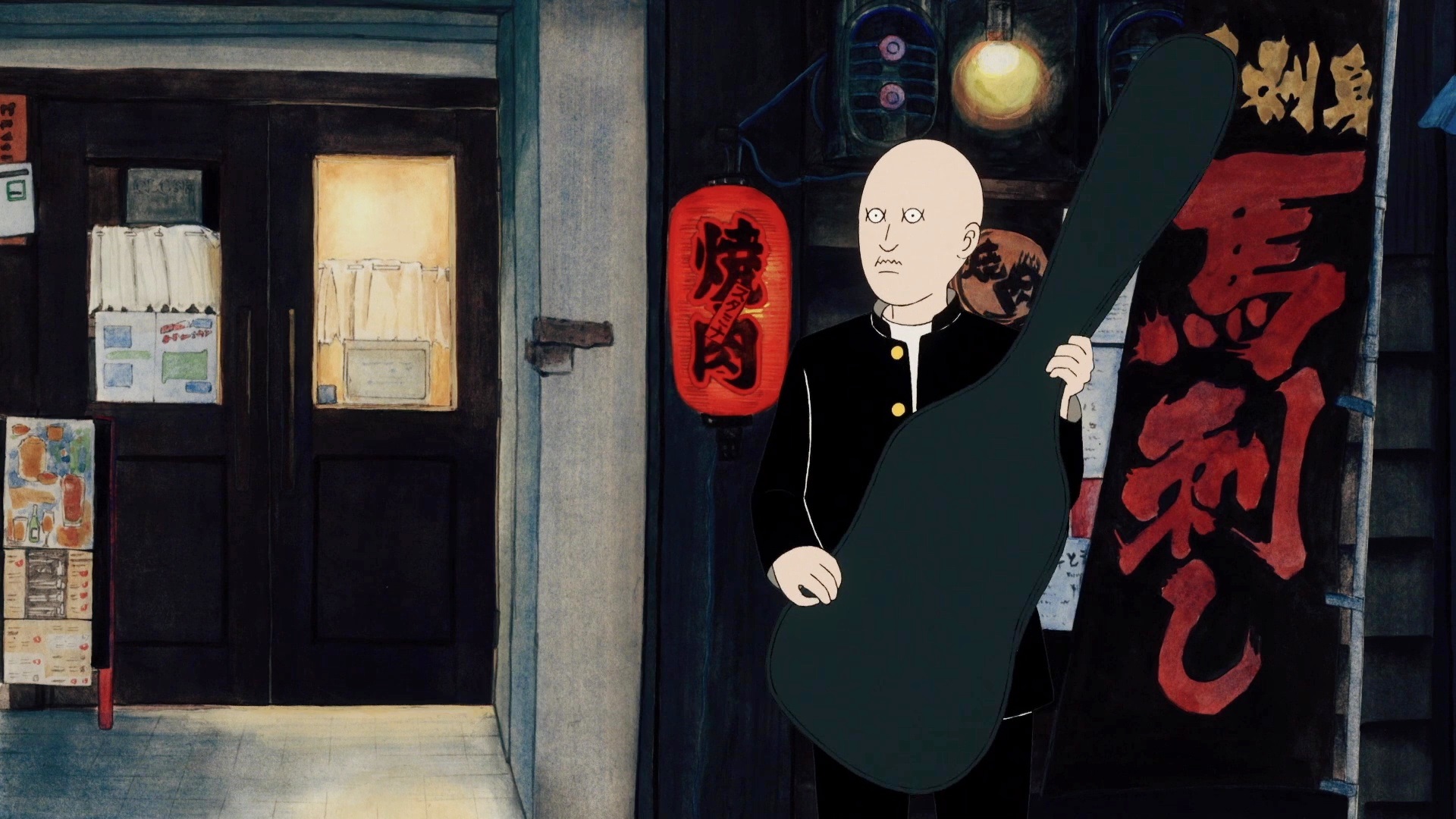
The coarse visual style of the film is no doubt the biggest hurdle to overcome for many anime fans. There’s almost an indulgent level of simplicity to its presentation. It bears a closer resemblance to American cartoons like Beavis and Butt-Head, than it does to the angular and wide-eyed designs of Japanese animation. This is a boon stylistically, but it can be jarring if you’re not prepared. Understanding the process of the film’s production allows a certain amount of forgiveness, but it is undeniably rough around the edges. The characters are depicted with limited and scrawny line work, but this gives a strange richness to their dry expressions, heightening the comical effect of their monotone dialogue. It has a nonchalant temperament that leans into its charming clumsiness as a tool for conveyance rather than a limitation. I always appreciate a unique design approach, even if the result can be a bit messy. Despite that, there is an innocuous fluidity to its rigid designs that provides consistency, and this allows its eventual stylistic machinations to attain a deliberate significance.
In contrast, the early portions of the film take a purposeful stance of seemingly wasteful stillness. Elongated moments of the camera holding still on the characters’ static expressions, or extensive vibe-inducing walk sequences of our band of miscreants patrolling around town give an endearing frankness to the storytelling. These patient moments of committed monotony lay the groundwork for the personality and lived experiences of the characters, and despite inaction, they are never dull. This is in part due to the appealingly grungy underscoring, but these moments have an innate absurdity and sheer willful energy that is irresistible.

This is later juxtaposed against messy collages of warping perspectives, flavorful motion, and cerebral color usage that culminate in a cacophony of musical exuberance. Closer examination reveals that these hallucinatory pencil sketchings, which are rotoscoped over live footage of Japanese bands such as Galaxiedead and Oshiripenpenz, contain an intentional thematic weight. The amount of fluidity and expression granted to a character's motion, models, and colors in the film is directly proportional to their connection with music at that moment. The sound within them is given shape and form, illustrating the visceral expressiveness of sound made from the soul.

It would be one thing if the dissonance of its motion was solely a byproduct of the fact that the production process was mostly a one-man show, and perhaps it is, but the fact that a choice was made to integrate those limitations into a creative representation of the ideas and themes of the film is an ingenious feat. Iwaisawa deserves all the credit he has been afforded and more. It is a loose thematic throughline of adolescent blasé that is neither overly dense nor unnecessarily vague. This stems from a more grounded take on the coming-of-age experience, and it’s comforting to see a work that avoids the usual pitfalls of the music genre. The fulfillment and gratification that the characters experience in this story aren’t tied to the usual metrics of music anime like financial/competitive success, or the power of friendship. That’s not to say it’s above a little self-indulgent dramatics, but it comes from a place of emotional truth.

“Without music, I’m nobody" —Morita
Set in an era when rock and roll was just getting its footing in Japan, ONGAKU: OUR SOUND has a quiet and nuanced auditory delivery despite the proximity of its premise to rock music. Much of its soundscape serves to create a comfortable hum of human activity. It draws the audience into its adolescent atmosphere with a deft assurance of its mood. The film’s humble background ambiance sets the stage for the show’s true star: the music.

The passionate musical infusion of ONGAKU begins with its references to classical rock. Iwaisawa admitted that much of the storyboarding of the film’s more psychedelic passages were influenced by the Beatles’ animated feature Yellow Submarine. These moments use famous rock records as a visual motif, referencing the likes of Tarkus, Who's Next, Led Zeppelin, Sailin' Shoes, Tubular Bells, and Atom Heart Mother. It isn’t entirely obtuse with its referential winks, tossing some more recognizable allusions like the appearance of the screaming face of the 21st Century Schizoid Man himself, or when Kenji and gang cross Abbey Road with their newly “acquired” instruments.

As expected, the depth of the film’s respect for the history of rock music is matched by the stripes and talent of the musicians who underscore it. In contrast to the rest of the film's production, the score was a labor of love from an eclectic group of musicians and producers. Much of the music for the film was written and performed by Tomohiko Banse, with tracks like “Nakunatta Home & Bass" (Missing Home and Bass), "Bobobo", "Kimi no Yokogao" (Your Profile), and “Bankara Bokuchi" (Rough Land). Wataru Sawabe of Skirt fame, who since went on to perform the ODDTAXI opening, is also credited on the title track “Ongaku”. The outro song is fittingly titled after unsung musician and composer Peter Ivers and is performed by the dresscodes. This group of misfit rock enthusiasts, under the composition supervision of GRANDFUNK, come together to deliver an endearing blend of garage and drone-rock acoustics with a deliberately unschooled delivery. Its purposeful bumbling suits the characters and the modest world they inhabit immaculately.
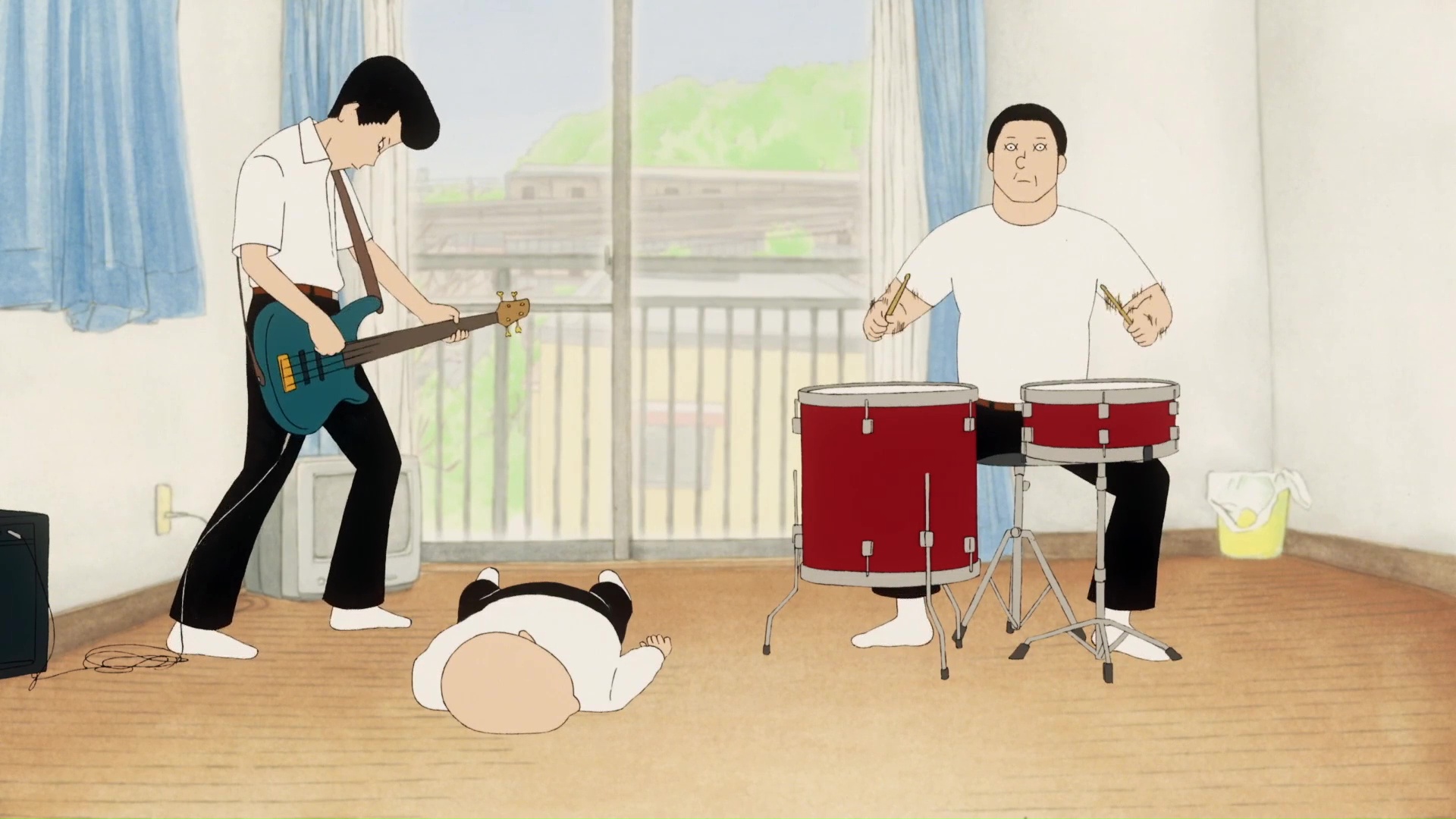
”On-Gaku: Our Sound was nominated to the Long Contrechamps Category and won the Best Original Music Award at the “2020 Annecy International Animated Film Festival”, which is one of the 4 largest international animation festivals around the world.” — the staff comments on the award can be found at Anime Anime Global
Comparing it to other indie film productions seems woefully unrepresentative of the time and effort that went into this project. Having gone through the growing pains of promoting an unknown band in the punk rock scene myself, as well as numerous other
failedcreative ventures, its message and delivery resonate deeply with me. My attachment to the style and substance of ON-GAKU: OUR SOUND, as well as its musical identity, make it a difficult film to evaluate in a vacuum. It can be tough to objectively assess a work with such heart and passion imbued in it, and equally as challenging to assign a numerical value to such a sparse yet focused final product. This is a film that will sit in my memory for a long time, one that I will revisit with friends and recommend passionately. Even if it can’t quite stand up to the production values of a large scale team project, or match the thematic density and nuanced character writing of the best of the best anime, it’s still remarkable for what it is and stands as one of the best indie productions to come out of Japan in recent years.Despite Iwaisawa winning Best Animated Feature at the Ottawa International Animation Festival, I can’t imagine he made the rounds at film festivals with critical reception in mind, but rather as an avenue to get as many eyes on OUR SOUND as possible. Even if I can only comprehend a fraction of the investment required of a project like this, the message of the film is clear to anyone who has so much as whiffed the creative process; art is an action, not a thing. The final product is outlived by the process of creation, and when “our sound” of listless youth finds purpose, it becomes music.
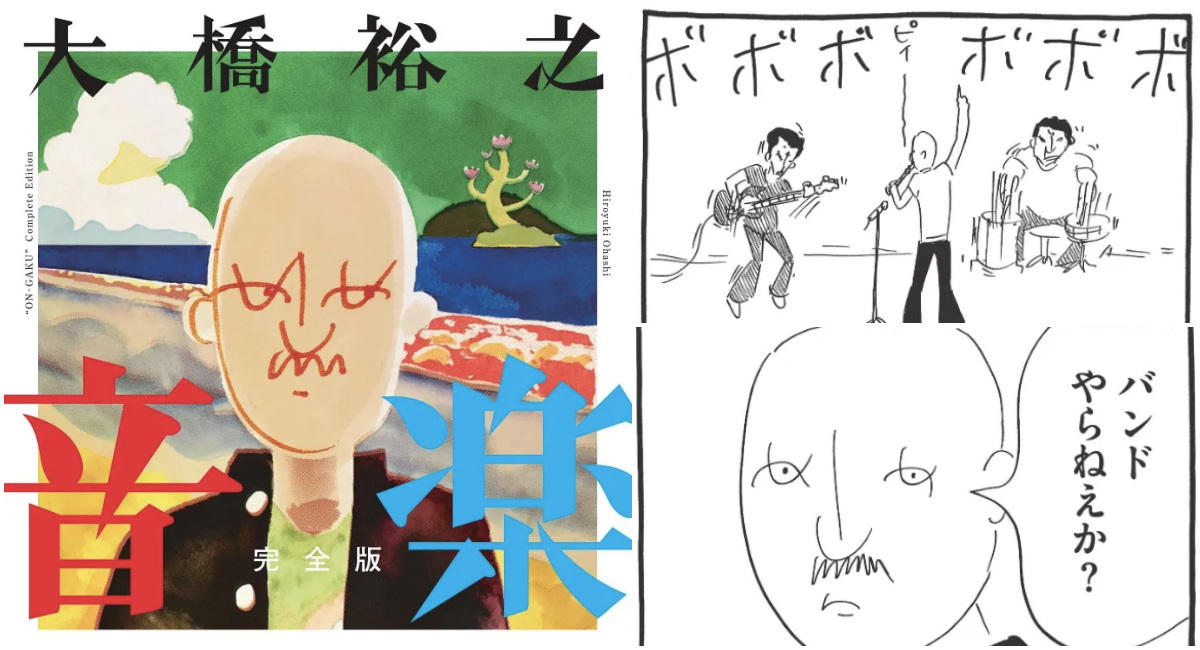
Special thanks to @jrextelevi and @JMack24 for helping to decipher the music references and @maklax for translating some of the musician credits so that I could give a more complete view of the artists who wrote and performed the score for the film.
And of course, big thanks to @wavieff bringing the boys together, and for always kicking me in the ass and motivating me to write in a more official capacity. You are the Kenji to my Morita.

Pordexel
100/100Everyone can create art.Continue on AniList“Let’s start a band.”
“But I can’t play.”
“That’s the point.”“ON-GAKU: Our Sound” is the quintessential example of a passion project. It is the result of 7-years of hard work from a small group of people with little to no animating experience, with a director who has previously worked on multiple animated shorts that are five minutes long maximum.

The first thing you will notice is that the animation in this film is very rotoscoped. It gives it this unconventional and realistic look to it that makes it feel alive. The second thing you will notice is the beautiful backgrounds, which consist of these hand-painted watercolor stills with colors that set the tone of the scene nicely.

The film has a very chill vibe to it, as most of it takes place wandering around a small, quiet town. There is a lot of dry humor and some goofy gags, giving the show a light-hearted tone that I quite enjoyed. There is nothing extraordinary about the characters (save for Morita), they are simply high school students. But the story and characters are not where this film shines.

Our protagonist Kenji is the leader of this trio who is feared by gangs from other schools, and we can see that he is a very monotonic individual who does not even seem to take any fun from beating up other gangs. One fateful day, he gets his hands on a string instrument that he has no idea what is called, but he decides to start a band despite him and his friends having no knowledge or experience with music at all. This is one of the core elements of ON-GAKU that I love so much. Art is usually something that can bring excitement and energy into your life, and you should not allow your lack of expertise stop you from pursuing a form of art; what is most important is that you do it because it is fun. When the trio play for the first time, it barely sounds like music that you would hear anywhere, but they do not care. This band would be known as Kobujutsu, which would fill Kenji’s life with joy, not caring about beating up other gangs because he is too preoccupied with the new band.
Morita is another musician who has much more experience and skill with music. He is the leader of another three-member band, much like Kobujutsu. We get to hear his band perform for our protagonists, and what is interesting is that while this beautiful song is being played, the animation for this segment becomes a tiny bit more complex, with the backgrounds changing slightly. Morita’s passion is showing itself through the animation.

When Kobujutsu performs for Morita, we get the first bit of animation that is visually impressive. Kenji and his friends have no technical skill at all, but their raw passion is reaching through to Morita on a spiritual level. This is another aspect of art; the ability to connect with others without using words. The fact that a musical expert with years of experience is able to recognize this passion is incredibly significant.
Kobujutsu is invited to a rock festival, and they are advised to record their music so they can listen to it. Unfortunately, this leads Kenji to lose interest in the band and quit. It is often common for newcomers of art to give up instantly when they are faced with their own art or any sort of difficulty, and Kenji is no exception. Kenji is back to his dull life and is devoid of energy, as can be shown in multiple scenes where he is lying on the ground doing nothing.

What is great about the animation is that most of it is simple and flat. But the moments when it becomes truly amazing are when the characters are full of PASSION. When Morita’s band is advertising the rock festival while playing in a park, everyone is ignoring them. But when Morita strays from the song and just starts jamming out and yelling his guts out, the animation turns into this highly detailed rough sketch sequence which looks visually impressive. Morita’s pure PASSION is seeping through the animation, and then it goes back to normal after the scene is over. The story of ON-GAKU is incredibly simple and not remarkable. It is a story that could only work at its fullest potential with this particular group of animators and director.

During the final act of ON-GAKU, Kenji has gotten his passion back in the form of a new instrument, the recorder. When art starts to become dull, it is a great idea to explore new techniques you would not have expected to try before. We also see Morita’s band perform their second song in this film, and this time they are all dressed like a rock band, and they perform a song that fitting their look. Perhaps this was inspired by Kobujutsu’s rock spirit? Kenji shows up to the festival right on time to perform with his friends once again. This time, we hear a beautiful recorder solo accompanying the familiar drum and guitar tune we are so familiar with. We also get the most visually impressive and stunning animation sequence in the entire film, and in anything I have ever seen. I will not post any frames at all on the chance you still have not watched this film and are reading this for some reason. Stop reading and watch it right now.
The song ends with Kenji letting out his singing voice for the first time while crying tears of joy.

After the festival, the band breaks up once again. Unfortunately, art is very difficult to master, and because of this, it can be quite easy to give up on it, much like Kenji does twice in this film. But there is always the chance that he will go back to music. He has already tasted the glory of musical performance, so he will definitely return.
ON-GAKU is an indie film that is a joy to watch. A story about amateur musicians that is told beautifully through the art and animation. It is impressive how the story and animation are both connected with each other, as if they were made for each other.
The best art is the type that inspires you to create your own art. This is why ON-GAKU will remain one of my favorite pieces of media ever. There are lots of scenes I wished to recreate on my own, but I really wanted to get this review out quickly, so I was only able to do two.


Everyone can create art.
SIMILAR ANIMES YOU MAY LIKE
 MOVIE DramaLiz to Aoi Tori
MOVIE DramaLiz to Aoi Tori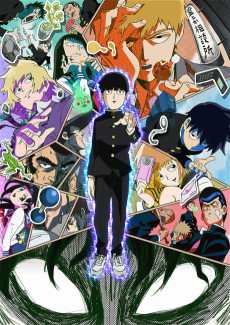 ANIME ActionMob Psycho 100
ANIME ActionMob Psycho 100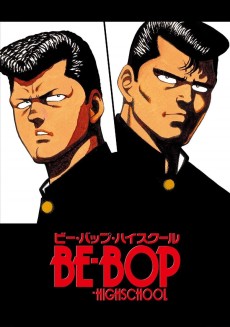 OVA ComedyBe-Bop High School
OVA ComedyBe-Bop High School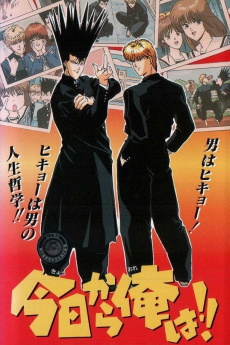 OVA ComedyKyou kara Ore wa!!
OVA ComedyKyou kara Ore wa!!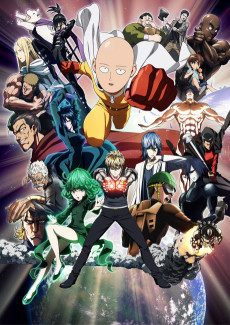 ANIME ActionOne Punch Man
ANIME ActionOne Punch Man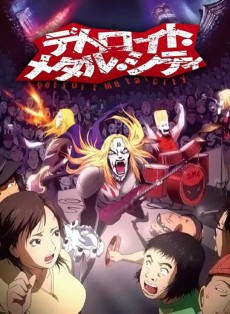 OVA ComedyDetroit Metal City
OVA ComedyDetroit Metal City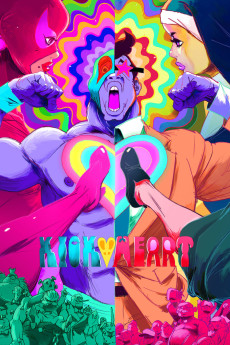 MOVIE ComedyKick-Heart
MOVIE ComedyKick-Heart
SCORE
- (3.75/5)
TRAILER
MORE INFO
Ended inJanuary 11, 2020
Favorited by 251 Users
Hashtag #アニメ映画音楽

